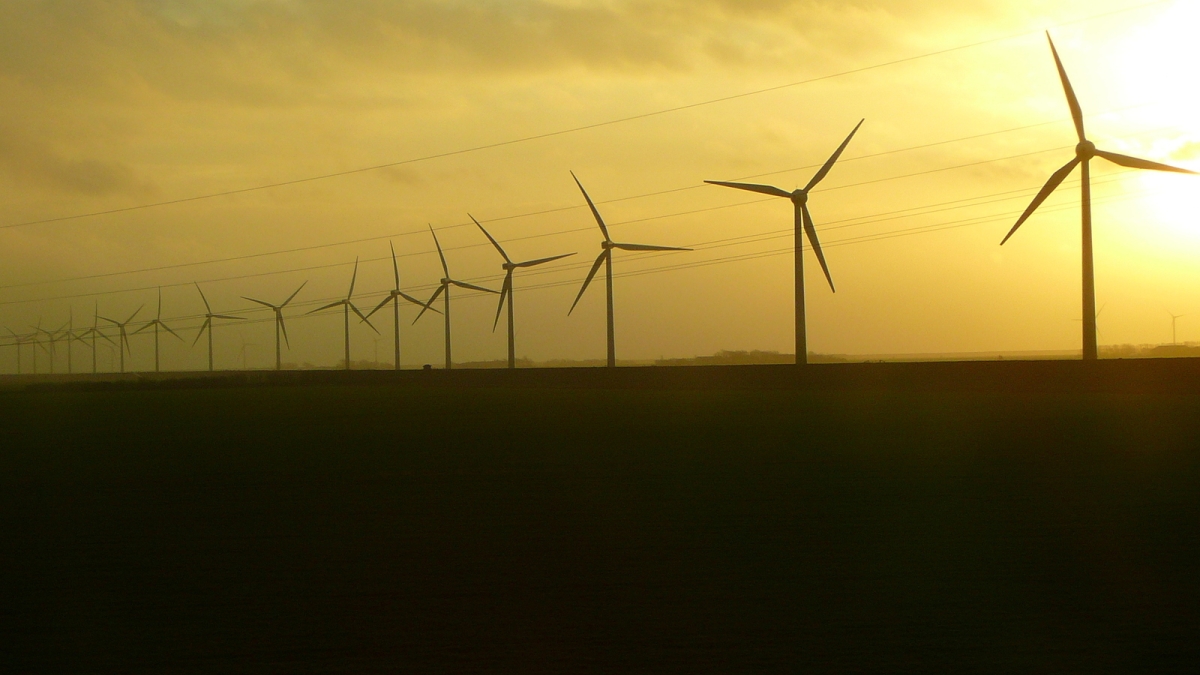The green energy story tends to be rosy: Costa Rica runs entirely on renewables! Portugal runs on wind for four days! Germany comes within 90 percent of its energy needs on a May day in 2016!
Is it all really that rosy? In a post-Paris agreement world, as countries pivot towards sun and wind power, what will the hurdles really look like?
They will be significant and often unforeseen, according to an essay published in Issues in Science and Technology by Christine Sturm, a PhD candidate in ASU’s School of Sustainability. “Germany’s energy transition is coming at a very high cost,” Sturm writes. “Energy systems are complex amalgams of technologies, institutions, markets, regulations and social arrangements. Nations have little experience intervening in such socio-technical systems.”
But it’s exactly the kind of problem being tackled by the School of Sustainability with a new degree in sustainable energy slated to kick off in August.
“That’s the idea,” said Martin Pasqualetti, a professor in the School of Geographical Sciences and Urban Planning, College of Liberal Arts and Sciences, and a senior sustainability scientist in the Julie Ann Wrigley Global Institute of Sustainability. “We’ll train PhDs who will work on this type of thing.”
Sturm, seeking her doctorate in sustainability, which has a broader scope than the sharp focus of sustainable energy, is a veteran of German energy. She has worked on market deregulation, as an industry spokesperson, and in several executive positions at RWE, Europe’s largest energy provider.
Germany is one of the first countries to make a concerted effort to go green, but it’s not on target to meet greenhouse gas emissions goals.
“Energiewende,” or “Energy Turnaround,” is a massive German project on the scale of the American New Deal or Soviet five-year plans, which began to turn German energy green in 1991. The goal? Reduce greenhouse gas emissions by 80 to 95 percent from 1990 levels by 2050, without nukes but with affordable energy.
Ramping up to capacity, with huge public support, is a win. Exploding energy costs, failed policy tools like German and European Union trading plans, and reeling utility companies, coupled with a failure to meet goals, are the dark side.
“The major challenge for Energiewende-like programs is to integrate intermittent sources of power into existing energy systems,” Sturm said in the essay. “But despite all efforts to convert excess electrical power to hydrogen, methane, heat or other storable commodities, and despite all progress made in battery research, storing the electricity necessary to solve Germany’s intermittency problem remains technologically, economically and politically out of reach.”
Pasqualetti recognizes the challenge, calling the initiation of the PhD in sustainable energy “the most significant advancement we’ve had since I’ve been here.”
Inherent in sustainable energy “is ‘energy transition,’” he said. “That’s what we’re working on.”
Pasqualetti studies energy as a social issue, the creation and reuse of energy landscapes, and public acceptance of renewable energy technology.
“We’re going to be a leading educational institution on this,” he said, citing classes on solar, algae, battery storage, wind and other renewables. “There’s a lot of interest from students in doing renewable work. They won’t all be PhDs.”
The biggest issue — and one that’s a universal problem for renewable energy — is intermittency. The wind doesn’t blow every day, nor does the sun appear every day. What do you do on still, overcast days?
“An optimist might declare that the very fact that Germany’s electricity grid has not collapsed must mean that the intermittency problem is well on the way to being solved,” Sturm said. “In reality, collapse has been averted only through two mechanisms that run directly counter to the goals of the Energiewende.”
Intermittency is balanced by running fossil power plants when conditions aren’t right for renewables. On sunny and windy days, Germany produced so much power it had to push the surplus on neighboring grids, disturbing their systems and creating additional costs. “Thus, these solutions are neither economically sustainable nor carbon-free,” Sturm wrote.
The solution doesn’t exist yet, but smart government is key to making a transition to green work, Pasqualetti said.
“Policy is very, very important in making this transition,” Pasqualetti said. “If you wait for the free market, you could be waiting forever. It’s very slow-going. You have to enstate policies to get you over that hump. No one wants to take the risk. So you give them a policy to invest in solar, or invest in wind or whatever, and they can make money.”
More Environment and sustainability

Rethinking Water West conference explores sustainable solutions
How do you secure a future with clean, affordable water for fast-growing populations in places that are contending with unending drought, rising heat and a lot of outdated water supply infrastructure…
Meet the young students who designed an ocean-cleaning robot
A classroom in the middle of the Sonoran Desert might be the last place you’d expect to find ocean research — but that’s exactly what’s happening at Harvest Preparatory Academy in Yuma, Arizona.…

From ASU to the Amazon: Student bridges communities with solar canoe project
While Elizabeth Swanson Andi’s peers were lining up to collect their diplomas at the fall 2018 graduation ceremony at Arizona State University, she was on a plane headed to the Amazon rainforest in…


